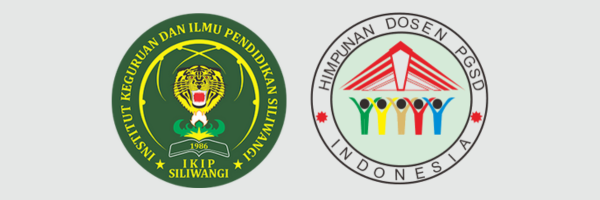APPLICATION OF REALISTIC MATHEMATICS APPROACH TO IMPROVE STUDENTS PROBLEM SOLVING ABILITY IN ELEMENTARY SCHOOL
DOI:
https://doi.org/10.22460/pej.v5i2.2758Abstrak
This research is motivated by the low level of problem solving ability of grade IV students of SDIT Cendekia Purwakarta, from 30 students only 5 students who only get the percentage of learning mastery 16,6%. One alternative approach to learning that can be used to improve students' problem solving skills is by applying the Realistic Mathematics Education (RME). This approach in learning can relate learning to the real world and a problem imagined in the minds of students to be the starting point of learning, so that abstract learning can be made real by the students. This study aims to improve students' problem solving skills of grade IV SDIT Cendekia Purwakarta on the implementation of research by applying Realistic Mathematics Education. The research method used is Classroom Action Research with Kemmis and Mc. Taggart. Instruments used are student and teacher observation sheets and test problem solving abilities. Based on the results of research for 2 cycles obtained results on the cycle I percentage mastery learning students reached 56.6% with many students who complete 17 students and on the second cycle increased to 27 students who complete learning with a large percentage of 90%. Therefore, it can be concluded that the application of realistic mathematics education can improve the problem solving ability of elementary school students.Â
Referensi
Adjie, Nahrowie & Maulana. (2009). Pemecahan Masalah Matematika. Bandung: UPI Press.
Ananda, R. (2018, Mei). Penerapan Pendekatan Realistics Mathematics Education (RME) untuk Meningkatkan Hasil Belajar Matematika Siswa Sekolah Dasar. Journal Cendekia: Jurnal Pendidikan Matematika, 2(1), 125. Retrieved 06 12, 2021, from https://www.j-cup.org/index.php/cendekia/article/download/39/31
Heriawan, A., Darmajari & Senjaya, A. (2012). Metodologi Pembelajaran Kajian Teori Praktik. Banten: LP3G.
Herman, T. (2000). Startegi Pemecahan Masalah (Problem Solving) Dalam Pembelajaran Matematika. Retrieved from http://file.upi.edu/Direktori/FPMIPA/JUR._PEND._MATEMATIKA/196210111991011-TATANG_HERMAN/Artikel/Artikel14.pdf
Kusumah, W. & Dwitagama, D. (2010). Mengenal Penelitian Tindakan Kelas. Jakarta: Indeks.
Lestari, K. E. & Yudhanegara, M. R. (2015). Penelitian Pendidikan Matematika. Karawang: Aditama.
Muhsetyo, G. (2009). Pembelajaran Matematika SD. Jakarta: Universitas Terbuka.
Nasution. (1982). Berbagai Pendekatan dalam Proses Belajar & Mengajar. Bandung: Bumi Aksara.
Shoimin, A. (2014). 68 Model Pembelajaran Inovatif dalam Kurikulum 2013. Yogyakarta: Ar-Ruzz Media.
Supardi & Suhardjono. (2012). Stategi Menyusun Penelitian Tindakan Kelas. Semarang: ANDI.
Susanto, A. (2013). Teori Belajar dan Pembelajaran di Sekolah Dasar. Jakarta: Prenadamedia Group.
Suwangsih, Erna & Tiurlina. (2006). Model Pembelajaran Matematika. Bandung: UPI Press.
Wena, M. (2008). Stategi Pembelajaran Inovatif Kontemporer. Malang: Bumi Aksara.












